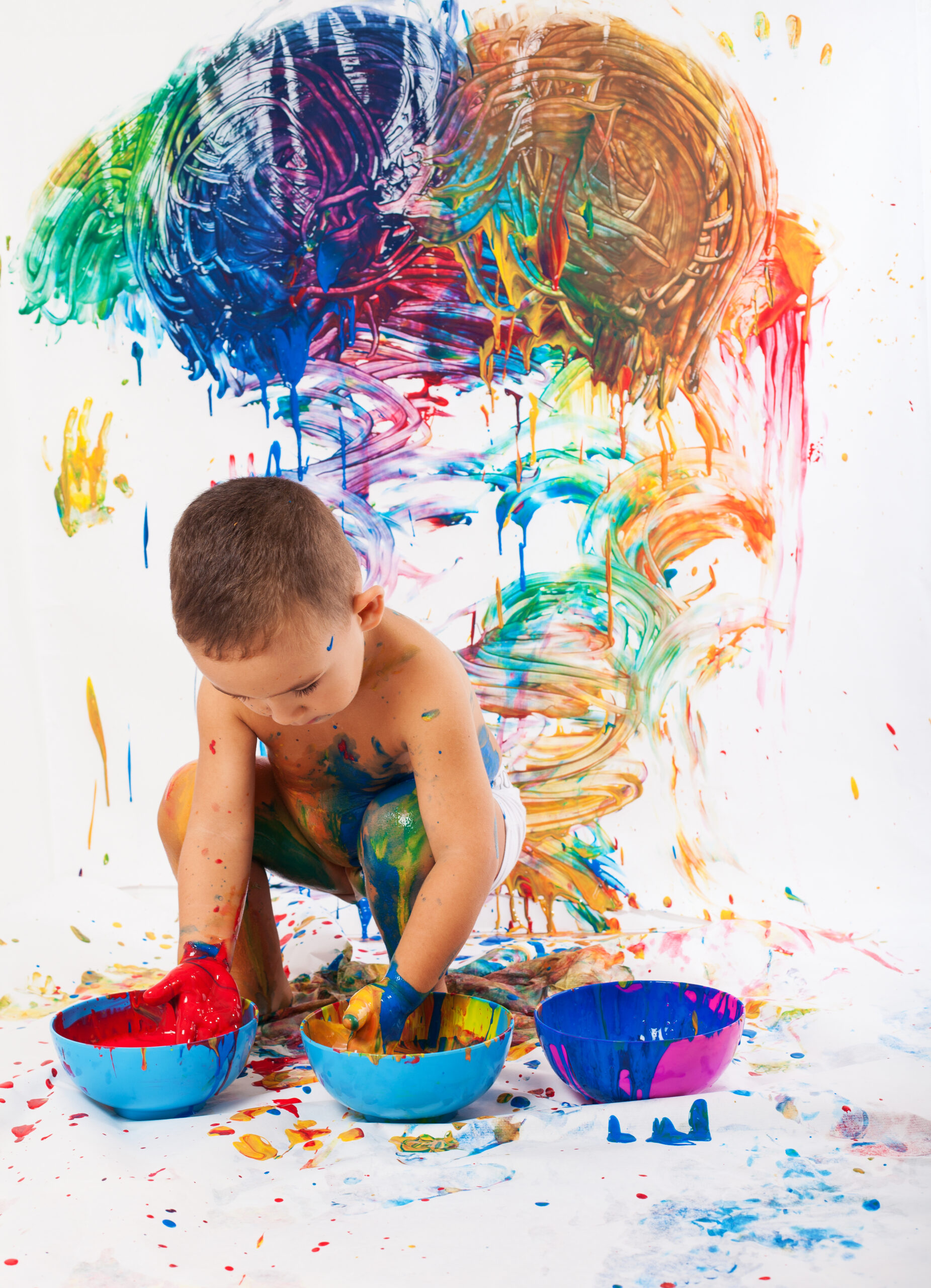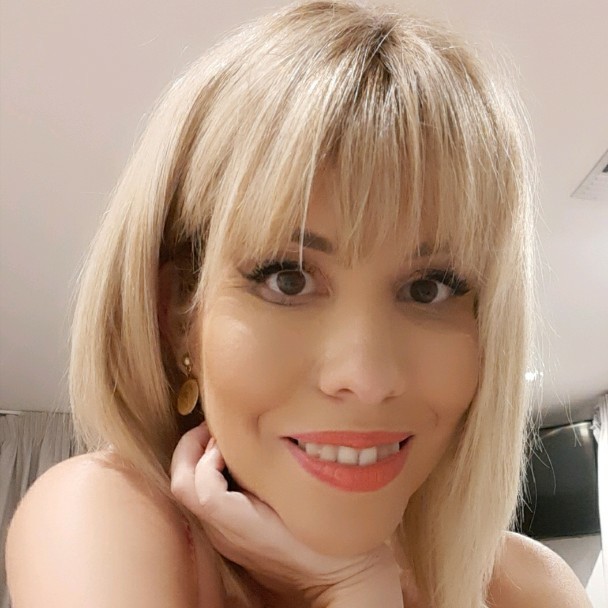Messy play and Sensory play have been widely used in education, however their use in ELT has been very limited and quite restricted in the field of SpLD. Our school is also a research centre, so through teaching practice and research we saw the amazing results of messy & sensory play in English language teaching.
We used messy & sensory play to engage Very Young Learners but also pre-A1 and A1-A2 level students in the learning procedure, boosting valuable skills and promoting language development. We were actually the first language school in Greece that combined messy play & sensory play with ELT and our research on “Messy play, Sensory Bins and Multisensory Activities in the English Teaching Classroom” was the first one that was published about the specific topic in Greece. It was presented at the 4th Panhellenic Conference: Educational Play and Art in Education and Culture (ekedisy).
Children, and especially children of a young age develop cognitively when they have various opportunities to explore the world around them, interact with other people, and play. Sensory materials like play dough, sand, water, flour, rice, Jello, provide pleasing and satisfying experiences for young children but also a way to explore and understand the world around them. Thus, sensory play provides young students with hands-on, active learning experiences which support children’s growth and learning in numerous areas. Through messy play and sensory play children use their imagination and become independent while learning how to use and develop their skills in order to use them in real life.
Through messy and sensory play students practice valuable skills (communication, collaboration, problem-solving, critical thinking) but also fine motor skills that can utilize them in real life. Messy play and sensory play are the ultimate forms of experiential learning. Children learn by doing and observing. Dewey states that “Children simply like to do things and watch to see what will happen.” This can be taken advantage of to teach certain vocabulary and structures or you can allow it to go in on at random and let children guide the learning experience!
For VYL the primary aim is to support and enhance children’s learning experiences though the use of sensorial materials in every lesson in a way to encourage exploration, discovery and independence. Children learn about colours, size, numbers, shapes, seasons, and generally about the world around them through exploring it with their five senses. Apart from the language skills that those learners develop, they also work on fine motor skills, their memory and adaptability skills too, since they develop a sense of cause and effect, allowing them to feel secure and more adaptable.
The purpose is to teach very young children English (forms, structures, sounds etc.) indirectly through language focused play activities but we should also teach them skills, specific knowledge (Maths, science, etc.), associated concepts, attitudes, and values, through the medium of English. Messy play and sensory play, as it was previously mentioned, are implemented in every session of the VYL’s lessons.
Depending on the aim, the activities are implemented at the beginning, middle or ending of the lesson. When the aim is to present new vocabulary or structures, we choose to place the activity at the beginning of the lesson as a means to explore the language and present the new vocabulary items or structures. You can see some examples of the activities in the following pictures.
For pre-A1 and A1s levels messy play and sensory play activities are not part of every lesson as in VYL, but are used for specific purposes, for inquiry-based learning, storytelling lessons as a retelling technique or as means to present, test or revise vocabulary and structure. When it comes to those age groups the refinement of motor skills is not the aim but other skills such as communication, collaboration and problem-solving skills are greatly developed through messy play and sensory play activities. You can see examples of the way messy and sensory play is implemented with those age groups below.
Sensory Story: Little Red Riding Hood
Design your own city and describe it!
Inquiry-based learning: exploring different kinds of holidays
Learning about the animals
Beach activities
Messy play and sensory play activities have been implemented and used in our school with the aim to engage students actively in the learning procedure, motivate them and boost their communication and collaboration skills. It was widely noticed that those activities provided opportunities for expression and communication in the target language, promoted cooperation, sharing and positive peer interaction and offered a stress-free space for experiencing and expressing in the target language. Mostly though, it was documented that messy play and sensory play, when used as a learning tool in the field of ELT, encouraged a love for learning through hands-on discovery.
Messy Play & Sensory Play in ELT!
By Elizabeth Veliou
Messy play and Sensory play have been widely used in education, however their use in ELT has been very limited and quite restricted in the field of SpLD. Our school is also a research centre, so through teaching practice and research we saw the amazing results of messy & sensory play in English language teaching.
We used messy & sensory play to engage Very Young Learners but also pre-A1 and A1-A2 level students in the learning procedure, boosting valuable skills and promoting language development. We were actually the first language school in Greece that combined messy play & sensory play with ELT and our research on “Messy play, Sensory Bins and Multisensory Activities in the English Teaching Classroom” was the first one that was published about the specific topic in Greece. It was presented at the 4th Panhellenic Conference: Educational Play and Art in Education and Culture (ekedisy).
Children, and especially children of a young age develop cognitively when they have various opportunities to explore the world around them, interact with other people, and play. Sensory materials like play dough, sand, water, flour, rice, Jello, provide pleasing and satisfying experiences for young children but also a way to explore and understand the world around them. Thus, sensory play provides young students with hands-on, active learning experiences which support children’s growth and learning in numerous areas. Through messy play and sensory play children use their imagination and become independent while learning how to use and develop their skills in order to use them in real life.
Through messy and sensory play students practice valuable skills (communication, collaboration, problem-solving, critical thinking) but also fine motor skills that can utilize them in real life. Messy play and sensory play are the ultimate forms of experiential learning. Children learn by doing and observing. Dewey states that “Children simply like to do things and watch to see what will happen.” This can be taken advantage of to teach certain vocabulary and structures or you can allow it to go in on at random and let children guide the learning experience!
For VYL the primary aim is to support and enhance children’s learning experiences though the use of sensorial materials in every lesson in a way to encourage exploration, discovery and independence. Children learn about colours, size, numbers, shapes, seasons, and generally about the world around them through exploring it with their five senses. Apart from the language skills that those learners develop, they also work on fine motor skills, their memory and adaptability skills too, since they develop a sense of cause and effect, allowing them to feel secure and more adaptable.
The purpose is to teach very young children English (forms, structures, sounds etc.) indirectly through language focused play activities but we should also teach them skills, specific knowledge (Maths, science, etc.), associated concepts, attitudes, and values, through the medium of English. Messy play and sensory play, as it was previously mentioned, are implemented in every session of the VYL’s lessons.
Depending on the aim, the activities are implemented at the beginning, middle or ending of the lesson. When the aim is to present new vocabulary or structures, we choose to place the activity at the beginning of the lesson as a means to explore the language and present the new vocabulary items or structures. You can see some examples of the activities in the following pictures.
For pre-A1 and A1s levels messy play and sensory play activities are not part of every lesson as in VYL, but are used for specific purposes, for inquiry-based learning, storytelling lessons as a retelling technique or as means to present, test or revise vocabulary and structure. When it comes to those age groups the refinement of motor skills is not the aim but other skills such as communication, collaboration and problem-solving skills are greatly developed through messy play and sensory play activities. You can see examples of the way messy and sensory play is implemented with those age groups below.
Sensory Story: Little Red Riding Hood
Design your own city and describe it!
Inquiry-based learning: exploring different kinds of holidays
Learning about the animals
Beach activities

